From Connection to Commitment: Rethinking Donor Engagement as Sacred Relationship
From Connection to Commitment: Rethinking Donor Engagement as Sacred Relationship
A Note from Meredith McNabb
Associate Director of Education, Lake Institute on Faith & Giving
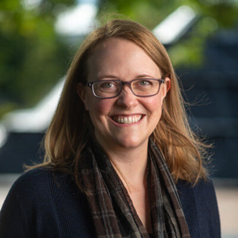 Lake Institute is glad to welcome Rachel Perten, Director of Advancement at the Central Conference of American Rabbis, as a guest contributor. Rachel helped teach in a recent Lake Institute course as participants considered the life cycle of a donor—how religious organizations can think about a person or a family getting started in philanthropic giving in a religious context, and how they might deepen that practice over time. We’re grateful for her sharing more on that approach here.
Lake Institute is glad to welcome Rachel Perten, Director of Advancement at the Central Conference of American Rabbis, as a guest contributor. Rachel helped teach in a recent Lake Institute course as participants considered the life cycle of a donor—how religious organizations can think about a person or a family getting started in philanthropic giving in a religious context, and how they might deepen that practice over time. We’re grateful for her sharing more on that approach here.
By Rachel Perten, MPA, Director of Advancement at the Central Conference of American Rabbis
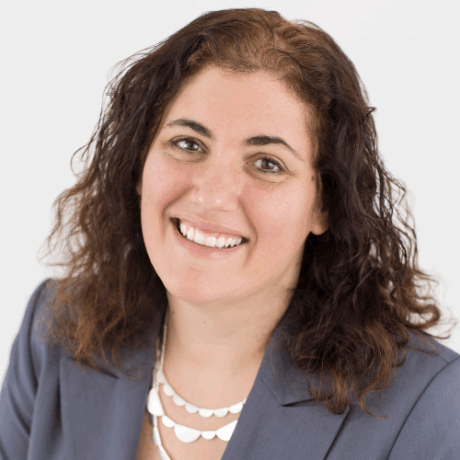
If you’re in a position of leadership within a religious institution—whether clergy, a lay leader, or directing a nonprofit—you already know that relationships are at the core of everything we do. We preach, teach, listen, guide, and gather—all in service of building community. So, when it comes to fundraising, it’s not always about asking for money. It’s about deepening relationships. That’s why a relational approach like Moves Management can be so powerful.
What is Moves Management?
Simply put, Moves Management is a framework for cultivating and strengthening donor relationships over time. A “move” is any intentional action that brings someone closer to your mission and community. It might be a personal thank-you note, a coffee conversation, or an invitation to get involved with a program. Each touchpoint is meaningful when it’s rooted in genuine care and connection. It’s not about pressure—it’s about presence. Done well, it reflects our deepest values: hospitality, gratitude, and shared purpose.
Real-Life Examples
Judith’s Journey:
Judith first attended a service as a guest, invited by a friend. She enjoyed the experience but wasn’t sure where she fit in. A few days later, she received a warm follow-up: an invitation to a holiday meal and a handwritten thank-you note. Feeling genuinely welcomed, she began showing up more regularly.
As she got to know people—through post-service conversations, a discussion group, and casual coffee chats—Judith felt increasingly connected. When a speaker addressed a topic that resonated deeply, she made her first donation in memory of her parents.
Over time, her involvement grew. She began volunteering, joined a committee, and became a consistent supporter of the Endowment Fund.
Judith’s story wasn’t about one big moment—it was a series of thoughtful, intentional steps that made her feel seen and valued. That’s the heart of Moves Management: deepening connection in ways that invite lasting generosity.
David’s Involvement Grows:
David first connected with the community through a music event held in the gathering space. A longtime music lover, he appreciated the welcoming atmosphere and stayed afterward to chat with one of the spiritual leaders. A few weeks later, he received a thoughtful invitation to attend a discussion group, followed by a personal note thanking him for coming. As David continued to show up—at services, learning sessions, and volunteer opportunities—leaders took time to learn about his interests.
Eventually, someone invited him to co-chair a new arts initiative. Feeling seen and appreciated, David accepted—and not long after, made his first contribution to support adult education. Today, David is a regular donor, an active volunteer, and a trusted voice within the community.
Judith and David’s journeys didn’t happen by chance—they were shaped by intentional, caring steps. That’s the essence of Moves Management: not pushing people to give but creating space where generosity grows naturally through relationship.
Why It Matters in Religious Communities
Religious communities and institutions aren’t just service providers; we’re centers of meaning. People don’t give to us because they’re buying a product. They give because they believe in the sacred work we’re doing—because they want to be part of something that matters.
Belief, though, isn’t enough on its own. People need to feel seen, valued, and invited. Moves Management gives us a way to offer that invitation with thoughtfulness and care. It honors the uniqueness of each person’s journey and supports them as they grow from curious observer to committed supporter.
The Five Stages of Donor Engagement
Moves Management typically unfolds in five key stages:
1. Identify – Who’s showing up? Who’s asking thoughtful questions or volunteering time? Pay attention to who might be ready for a deeper connection.
2. Qualify – Learn more about these individuals—their interests, values, and giving capacity. Not everyone is ready to give right away, and that’s okay. This step is about understanding, not judgment.
3. Cultivate – This is where the relationship deepens. Share the impact of your work, extend meaningful invitations, and create experiences that help people feel like insiders.
4. Solicit – When the time is right, extend a thoughtful, personalized invitation to give. If the relationship has been nurtured well, this won’t feel awkward—it will feel like a natural next step.
5. Steward – After a gift is made, say thank you. Show the difference their support makes. Keep them involved. Strong stewardship turns one-time givers into lifelong champions.
Putting Moves Management into Practice
Successfully implementing Moves Management requires more than good intentions—it requires consistency, coordination, and a clear system for tracking relationships. This might mean using a CRM (Customer Relationship Management) tool, developing shared staff protocols, or simply creating a spreadsheet to log meaningful interactions. The key is to ensure that no one slips through the cracks. When teams communicate and collaborate around donor engagement, the process becomes more intentional and less reactive. Every “move” can then build on the last, helping potential supporters feel known, remembered, and valued. And when leadership prioritizes this kind of strategic relationship-building, it becomes part of the community’s culture—not just a fundraising tactic.
Your Leadership Role
Whether you’re a member of clergy, executive director, or board chair, you don’t need to do it all—but your presence and authenticity are irreplaceable. People respond to leaders who are clear about their vision, honest about their needs, and genuine in their gratitude. Even a short conversation, a handwritten note, or a public thank-you can have a lasting impact. These small acts build trust—and trust builds community.
A Culture Rooted in Gratitude
At the end of the day, fundraising isn’t a break from your mission—it’s an expression of it. When we approach it as a vehicle of relationship, we give people the opportunity to live out their values, support what they love, and become part of something bigger than themselves.
Creating a culture of generosity starts with one thing: authentic connection. And when we lead with heart, generosity follows.
Rachel Perten, MPA, is the Director of Advancement at the Central Conference of American Rabbis (CCAR). She is a development professional with a background in faith-based institutions and community building. Rachel is passionate about helping leaders create meaningful relationships that lead to sustainable impact.
Expanded Perspective: Donor Lifecycle
By Rev. Dave Sigmund, Generosity Officer, National Ministries of the United Church of Christ
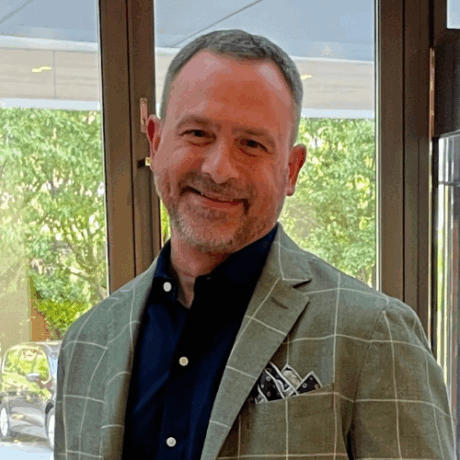
In my work with donors at the National Ministries of the United Church of Christ, I specialize in Planned Giving. It’s a holy undertaking. Planned Giving is not just estate planning, though that is clearly a large part. Planned Giving is also about giving generously from your wealth and assets. It’s both the legacy you want to leave but also what legacy you want to live in the here and now.
One of my favorite donor stories is about one couple I have worked with for a couple of years now; most recently on a planned gift for our racial and social justice work. We’ll refer to them as Joe and Jane (not their real names). They inspired me when they shared the ways they have been generous through the years. Especially setting up numerous church and school scholarship endowments in honor of parents and memorable teachers. What I found most inspiring was how they included others in their generosity and invited them to give to those as well. In doing so, they more than doubled or tripled the impact far beyond their initial gift, magnifying the gifts somewhat exponentially.
Their giving has not been just a one-time act but many acts over the course of a lifetime. I’ve lost count of the number of endowments they’ve created throughout their lives or how many times they invited others to join with them in that generosity. Joe once told me what their secret was: the invitation to others. He told me there was no way they could have done this on their own. Including others to join with them in their generosity was one of the couple’s keys to making an impact. They are salt of the earth humans – humble and kind. They don’t give to get accolades; they give to make the world a better place and invite others to do the same. That has stuck with me.
And now, as Joe and Jane reach the December of their lives, it is an honor to share conversations with them about what their legacy will be and how they plan to live it in the here and now, while also ensuring that the good work they seek to do in the world lives on in perpetuity.
Rev. Dave Sigmund is the Generosity Officer for the Office of Philanthropy at the National Ministries of the United Church of Christ, specializing in Planned Giving.
First Day Podcast: Why Donors Leave
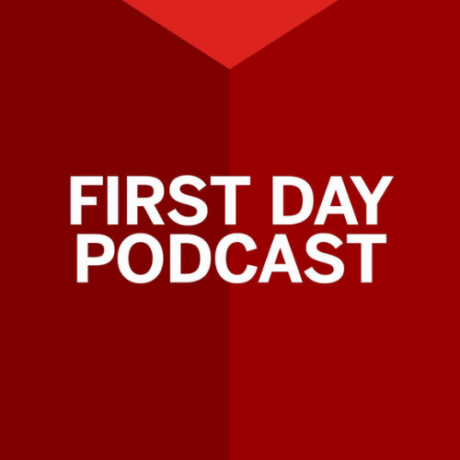 In this episode of The First Day from The Fund Raising School, host Bill Stanczykiewicz, Ed.D., sits down with Virginia Harrison, Ph.D., Assistant Professor at Clemson University, to dig deep into a question many nonprofit professionals fear to ask out loud: Why do donors leave? With a background in public relations and firsthand fundraising experience, Dr. Harrison brings both academic insight and real-world perspective to the increasingly vital topic of donor stewardship.
In this episode of The First Day from The Fund Raising School, host Bill Stanczykiewicz, Ed.D., sits down with Virginia Harrison, Ph.D., Assistant Professor at Clemson University, to dig deep into a question many nonprofit professionals fear to ask out loud: Why do donors leave? With a background in public relations and firsthand fundraising experience, Dr. Harrison brings both academic insight and real-world perspective to the increasingly vital topic of donor stewardship.
Webinar: The Latest Trends in Giving to Religion
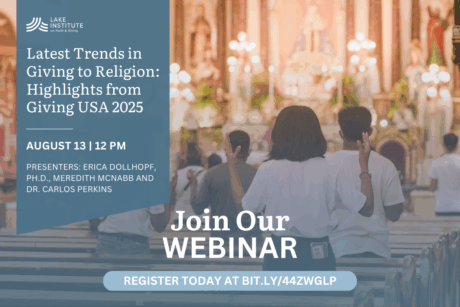 Join the Lake Institute team on August 13 at 12:00 PM ET for a Zoom webinar titled Latest Trends in Giving to Religion: Highlights from Giving USA 2025. Erica Dollhopf, PhD, Meredith McNabb, and Dr. Carlos Perkins will explore the newest data on religious giving and share key insights from the Giving USA 2025 report.
Join the Lake Institute team on August 13 at 12:00 PM ET for a Zoom webinar titled Latest Trends in Giving to Religion: Highlights from Giving USA 2025. Erica Dollhopf, PhD, Meredith McNabb, and Dr. Carlos Perkins will explore the newest data on religious giving and share key insights from the Giving USA 2025 report.
Subscribe
Insights is a bi-weekly e-newsletter for the religious community and fundraisers of faith-based organizations that provides:
- Reflections on important developments in the field of faith and giving
- Recommended books, studies and articles
- Upcoming Lake Institute events

